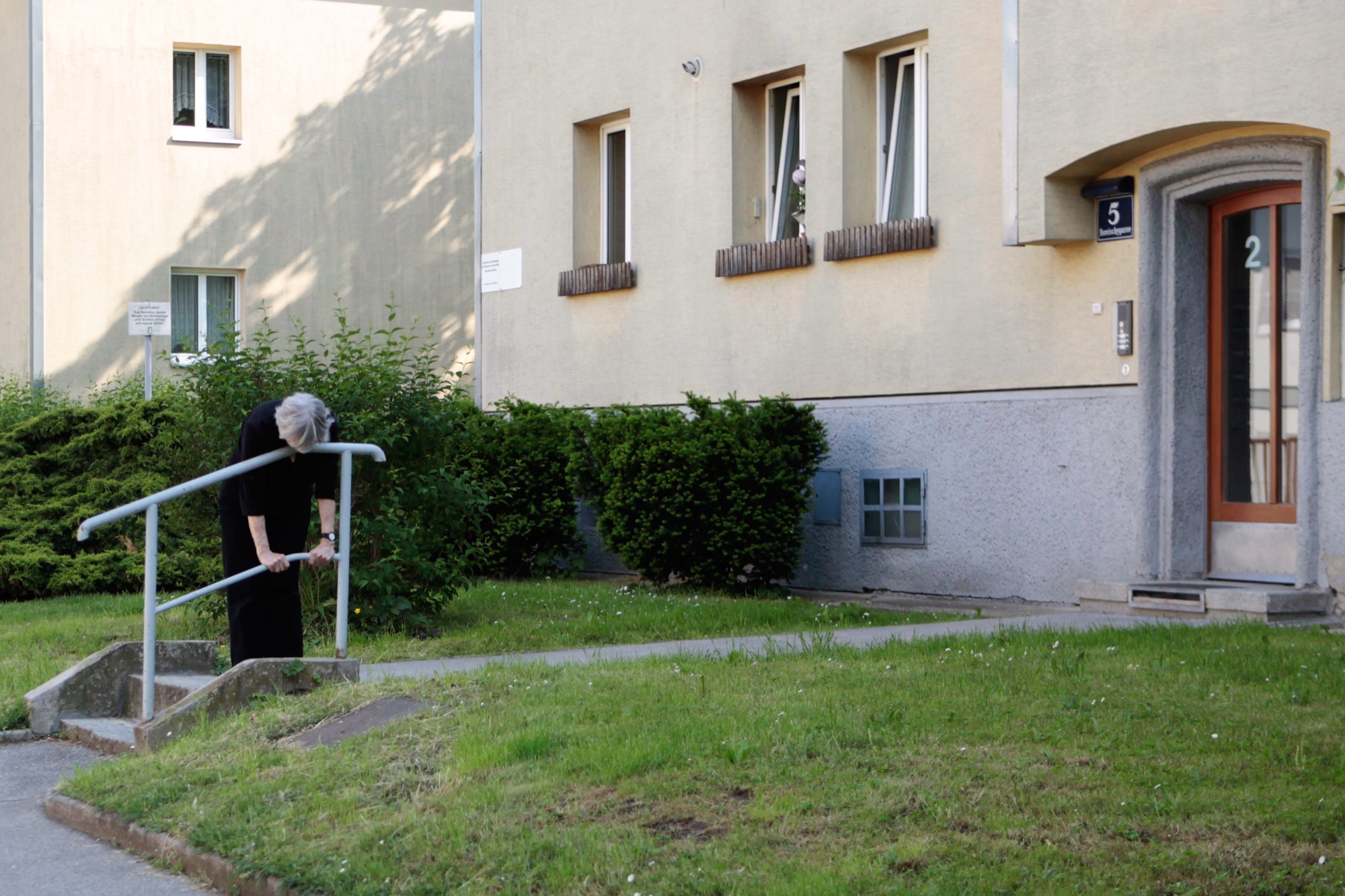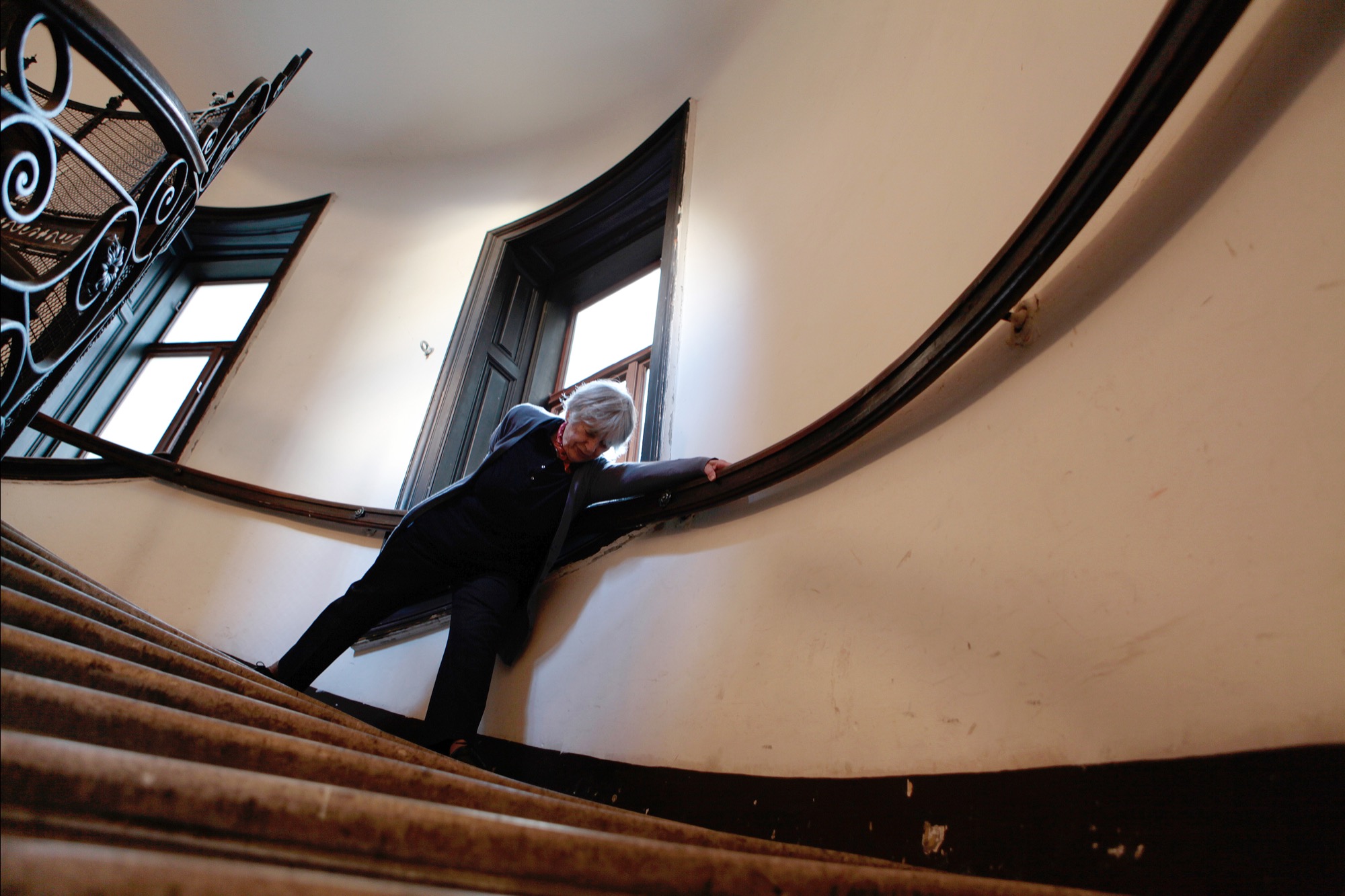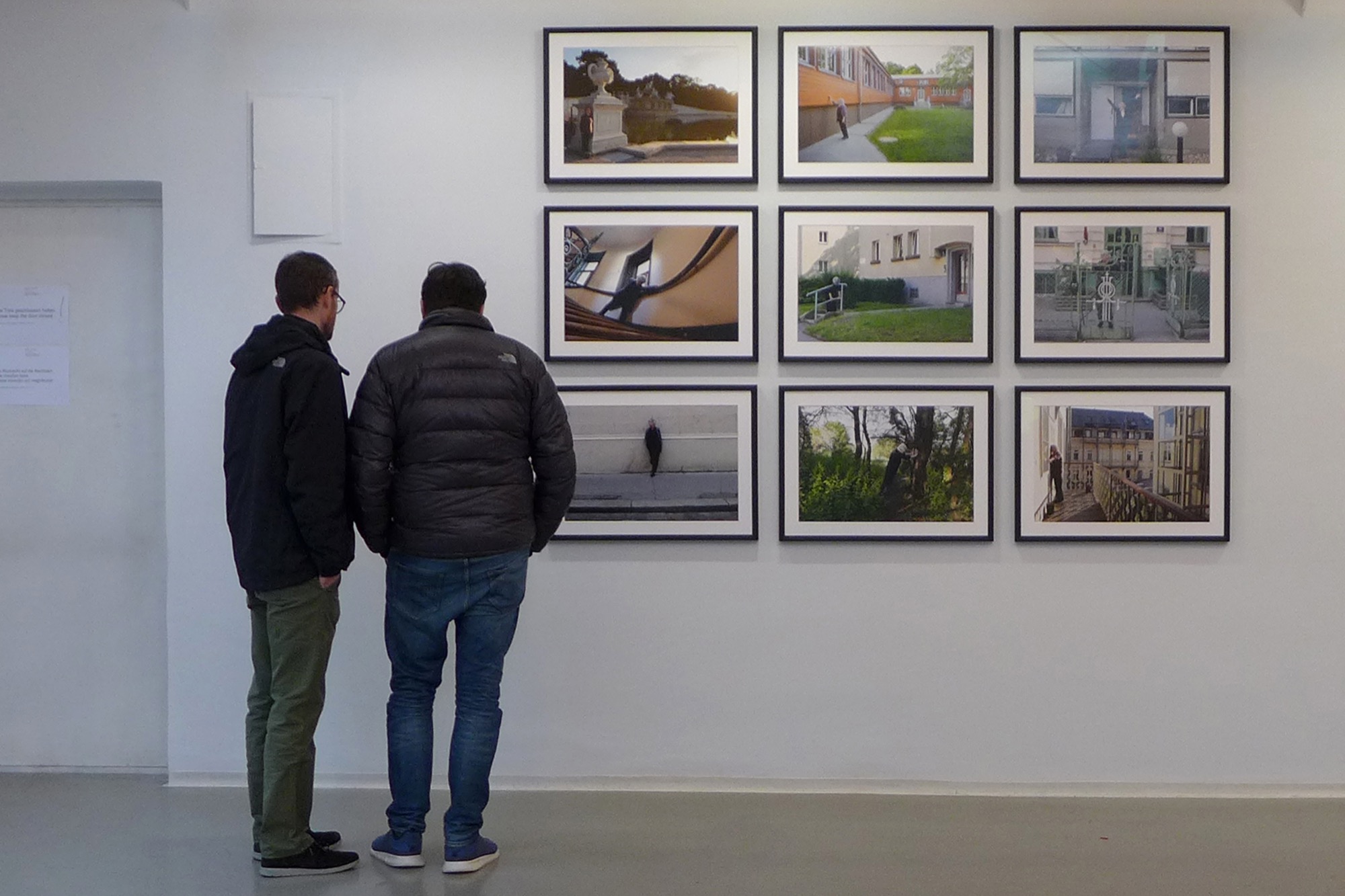2016 ︎
Back
in Vienna – Body Adaptations ︎
Series of 9 C-Prints on Fine Art Baryta︎
60 cm x 40 cm












Back in Vienna – Body Adaptations
Series of 9 C-Prints on Fine Art Baryta, 2016
60 cm x 40 cm
A series of photographs consisting of nine images: Shots that were taken in nine different locations in Vienna, as indicated by the addresses in their captions. None of these places are in the foreground, but rather the portrait of a woman and most importantly her story of coming to Vienna; even more accurately, her story of return. But the return of this woman, and her desire to really arrive was a lengthy process, one which has dragged on for several years - therefore: a story of arrival.
»For two years, twice a week: Waiting.« The title of the first image indicates the slowness of this process. The title of the last shows that it must have been a difficult, perhaps even existential time: »Today I am now no longer afraid.« The woman in the pictures, Helga Pollak-Kinsky, is with whom the artist Johanna Tinzl has collaborated for her work »Back in Vienna - Body Adaptatizons«. Following VALIE EXPORT’S series »Body Configurations«, developed in the early 1970s to the early 1980s, Johanna Tinzl chose together with Helga Pollak-Kinsky locations that were significant for her arrival to Vienna, and which are associated with particular emotions or memories. Places are resevoirs of memories. Cultural memory locations, in other words locations with inscribed histories, are mostly part of the collective memory.
But places are also resevoirs of individual memories, which can be reactivated through returning. At those places meaningful to her, Helga Pollak-Kinsky has tried specific postures as an expression of the memories of her then internal states. The combination of postures and the selection of places can be read with Valie Export: »A landscape represents an atmosphere, just as body posture expressions do. Expressions are formed not only by the face. So a state of mind can be expressed first by the configuration of landscape components, secondly by the configuration of body components and thirdly (…) - by the configuration of body elements in the landscape.«1
»For two years, twice a week: Waiting.« The title of the first image indicates the slowness of this process. The title of the last shows that it must have been a difficult, perhaps even existential time: »Today I am now no longer afraid.« The woman in the pictures, Helga Pollak-Kinsky, is with whom the artist Johanna Tinzl has collaborated for her work »Back in Vienna - Body Adaptatizons«. Following VALIE EXPORT’S series »Body Configurations«, developed in the early 1970s to the early 1980s, Johanna Tinzl chose together with Helga Pollak-Kinsky locations that were significant for her arrival to Vienna, and which are associated with particular emotions or memories. Places are resevoirs of memories. Cultural memory locations, in other words locations with inscribed histories, are mostly part of the collective memory.
But places are also resevoirs of individual memories, which can be reactivated through returning. At those places meaningful to her, Helga Pollak-Kinsky has tried specific postures as an expression of the memories of her then internal states. The combination of postures and the selection of places can be read with Valie Export: »A landscape represents an atmosphere, just as body posture expressions do. Expressions are formed not only by the face. So a state of mind can be expressed first by the configuration of landscape components, secondly by the configuration of body components and thirdly (…) - by the configuration of body elements in the landscape.«1
Johanna Tinzl’s series shows a looking back of Helga Pollak-Kinsky’s process of arrival in Vienna, which reaches from resignation and dispair, to adaptation and concealment, and eventually to the emergence of self-confidence and comfort. This development could be read as female emancipation, just as this has been the subject of »Body Configurations« - though in this case, it also has to be read as her search for dealing with her own history, and the Austro-German history respectively. Emancipation does not seem the right term, since one cannot be emancipated from history. In 1957 Helga Pollak-Kinsky returned to Vienna with her husband and two children, where she had to leave in 1938. Born in Vienna in 1930 to Jewish parents, Helga Pollak-Kinsky was able to survive National Socialism despite Theresienstadt, Auschwitz and labor camp - by luck, as she puts it.
After the Second World War firstly she was in London, and then in Bangkok and Addis Abeba with her then German-Jewish husband. She was finally able to return in 1957 to her birthplace of Vienna, where her father lived. »At my father's there was enough space for all of us.« The arrival in Vienna was difficult - because who could be trusted? What had the neighbors, the people done throughout the war? How could one feel safe as a Jew in a country that until the 1980s maintained the narrative of having been a victim of the Nazis in order to avoid facing one's own guilt and responsibility? So Helga Pollak-Kinsky tried as unobtrusively as possible to be invisible, to fit in, to camouflage herself so as not to be visible. »Here the saying went: Do not talk about it.«. Only in 1968, with her relocation within Vienna to a completely new neighborhood, Helga Pollak-Kinsky was allowed relief and a feeling of familiarity. »Arrived. We became good friends.«
The nine images delineate the period of her arrival in Vienna from 1957 until today. The time before resonates as an indirect layer of the narrative, as with the experiences and survival of the Holocaust in the lives of Helga Pollak-Kinsky (and other survivors) always remain somehow present. And therefore we all are obligated not to forget - because, even with the end of a war and of persecution, it is not over. This is one aspect of »Back in Vienna - Body Adaptations« that relates the individual experiences of Helga Pollak-Kinsky to current situations.
Johanna Tinzl’s camera keeps at a distance, and yet is so close that the intimacy between the two sides is visible. You are meant to leave Helga Pollak-Kinsky the necessary space so that her body can speak. The places are to stay in the background. They function as a display of remembering and become places of memory through the works.
Text: Christina Nägele
1 VALIE EXPORT, in Sabine Breitwieser (Hg.), Occupying Space. Sammlung Generali Foundation, Vienna 2003
The nine images delineate the period of her arrival in Vienna from 1957 until today. The time before resonates as an indirect layer of the narrative, as with the experiences and survival of the Holocaust in the lives of Helga Pollak-Kinsky (and other survivors) always remain somehow present. And therefore we all are obligated not to forget - because, even with the end of a war and of persecution, it is not over. This is one aspect of »Back in Vienna - Body Adaptations« that relates the individual experiences of Helga Pollak-Kinsky to current situations.
Johanna Tinzl’s camera keeps at a distance, and yet is so close that the intimacy between the two sides is visible. You are meant to leave Helga Pollak-Kinsky the necessary space so that her body can speak. The places are to stay in the background. They function as a display of remembering and become places of memory through the works.
Text: Christina Nägele
1 VALIE EXPORT, in Sabine Breitwieser (Hg.), Occupying Space. Sammlung Generali Foundation, Vienna 2003